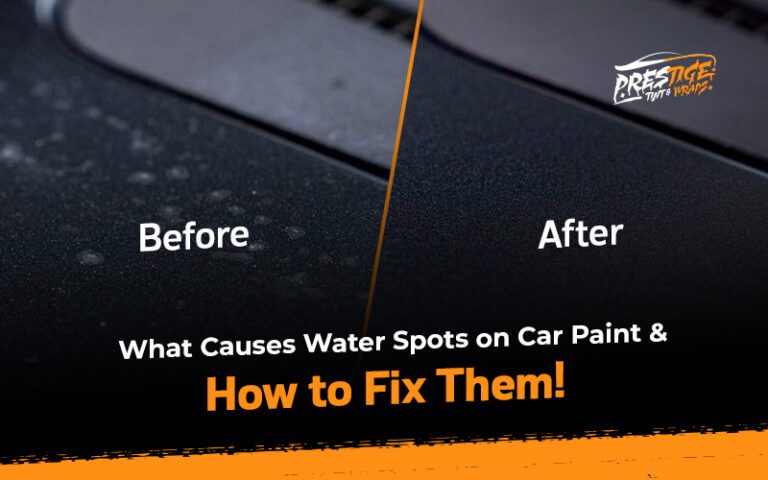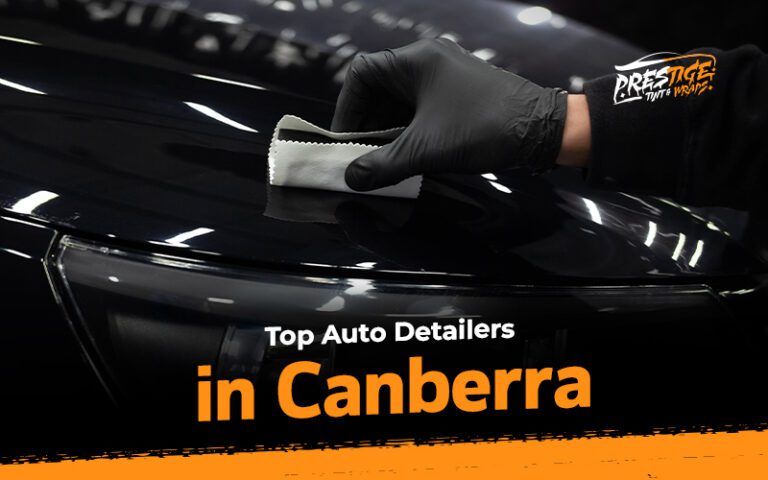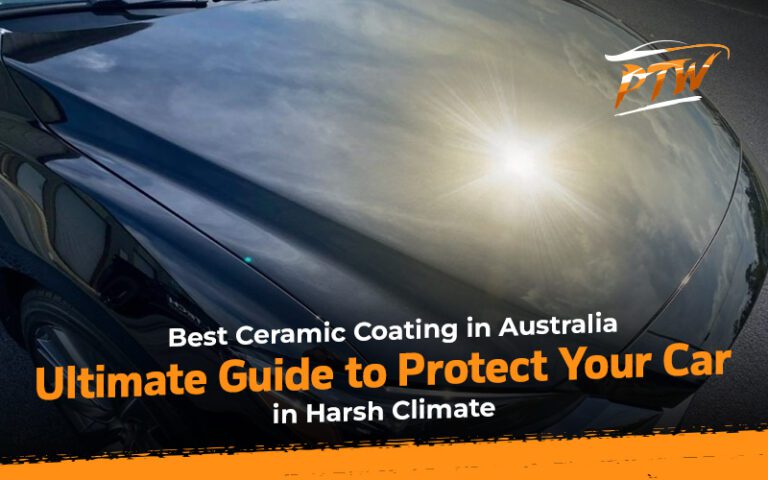Summer Car Detailing Tips for Aussie Heat and Dust

Australia’s summer presents unique challenges for vehicle owners. Intense heat and pervasive dust demand specific care routines. Proper car detailing in Australia is essential for paint longevity.
It also keeps your vehicle looking its absolute best. Neglecting your car during these months causes significant damage. Understanding the harsh conditions is the first crucial step.
This guide offers comprehensive tips for summer detailing success.
Understanding Australia’s Harsh Summer Environment
Australian summers bring extreme conditions for vehicles. Temperatures often soar, reaching scorching levels daily. Intense ultraviolet (UV) radiation constantly bombards your car’s surfaces.
This powerful sun exposure fades paint and degrades interior materials. Dust is another ever-present adversary across the continent. Fine particles settle everywhere, scratching paint when improperly removed. Bushfire season introduces ash, a highly corrosive contaminant.
Insects also splatter onto surfaces, etching clear coats if left too long. These environmental factors combine to attack your vehicle. Effective detailing combats these relentless assaults directly.
Pre-Wash Preparation: The Crucial First Step
Before any washing begins, preparation is vital. Remove all loose debris from the car’s exterior. Use a leaf blower or compressed air for this task. Focus on crevices, door jambs, and grille areas.
This step prevents larger particles from scratching paint during washing. Rinse the entire vehicle thoroughly with a strong stream of water. This initial rinse dislodges surface dirt and grime. It also cools down hot panels, preventing soap from drying too quickly.
Working on cool surfaces is always a detailing best practice. This thoughtful preparation sets the stage for a safer wash.
The Two-Bucket Wash Method
The two-bucket method is fundamental for safe washing. Fill one bucket with clean, fresh rinse water. The second bucket contains your chosen car wash shampoo solution. Use a grit guard in both buckets to trap dirt at the bottom.
Dip your wash mitt into the shampoo bucket first. Wash one section of the car at a time gently. Rinse the mitt in the clean water bucket after each section. This action removes trapped dirt from the mitt effectively.
Then, reload your mitt with fresh shampoo solution. This process minimizes the risk of introducing swirl marks. Always work from the top of the car downwards. This ensures dirty water flows away from already cleaned areas.
Choose a pH-neutral car shampoo for safe cleaning. Harsh detergents strip existing waxes or sealants. This careful washing technique protects your vehicle’s finish. Many auto detailers in Australia employ this precise method.
Decontamination
A regular wash removes surface dirt, but deeper contaminants remain. Iron fallout particles embed themselves in your car’s paint.
These tiny metal specks often originate from brake dust. Tar spots are common, especially after driving on freshly paved roads. Tree sap can also stubbornly adhere to painted surfaces.
A chemical iron remover safely dissolves these metallic particles. Spray it on, let it dwell, then rinse thoroughly. Use a dedicated tar remover for sticky black spots. Apply it with a soft cloth, then wipe away gently.
For embedded grime, a clay bar treatment is necessary. Lubricate the surface generously with a detailing spray. Glide the clay bar over the paint in straight lines. The clay lifts contaminants, leaving a smooth finish.
This deep cleaning prepares the paint for protection. Decontamination is a critical step for true paint clarity.
Safe Drying Techniques
Drying your car correctly prevents unsightly water spots. Hard water leaves mineral deposits as it evaporates. Use a high-quality microfiber drying towel for best results.
These towels are highly absorbent and incredibly soft. Blot the water rather than dragging the towel across the paint. This minimizes friction and reduces the chance of scratching.
A car blower can also effectively remove water without contact. Blow water out of crevices and around emblems. Always work in the shade or during cooler parts of the day.
This slows water evaporation, giving you more time. Speed is key when drying to avoid water spot formation. A clean, dry finish is essential before applying protection.
Paint Protection
Protecting your paint is paramount in the Aussie sun. Waxes offer a beautiful, warm glow and good protection. Carnauba waxes provide excellent depth and shine. Synthetic paint sealants offer longer-lasting durability.
They create a strong barrier against environmental elements. Ceramic coatings provide the ultimate long-term protection. These advanced coatings bond with the paint at a molecular level.
They offer superior UV resistance, chemical resistance, and hydrophobicity. Applying a ceramic coating requires meticulous surface preparation. It creates a hard, clear layer that repels dirt and water.
This makes future cleaning much easier for you. Regular application of protection shields your clear coat. It prevents oxidation and premature paint fading. Consider consulting professional auto detailers in Australia for coatings.
Interior Detailing
The interior also suffers greatly from summer conditions. Dust accumulates quickly on all surfaces. UV rays degrade dashboards, seats, and plastic trims.
Start by thoroughly vacuuming all carpets and upholstery. Use a detailing brush to dislodge trapped dirt from crevices. Wipe down all hard surfaces with a suitable interior cleaner.
Use a microfiber cloth to avoid leaving streaks. Apply a UV protectant to dashboards and door panels.
This product helps prevent cracking and fading. Clean and condition leather seats to prevent drying and damage. Use a fabric cleaner for cloth upholstery stains. Don’t forget to clean and protect interior glass surfaces.
A clean interior enhances driving comfort significantly. Regular interior care also maintains resale value.
Wheel and Tire Care
Wheels and tires endure immense punishment from heat and brake dust. Brake dust is corrosive and can permanently etch wheel finishes. Use a dedicated wheel cleaner, ensuring it’s safe for your wheel type.
Agitate with a soft wheel brush to remove stubborn grime. Rinse thoroughly to remove all chemical residue. For tires, scrub them clean with an all-purpose cleaner. This removes old dressing and road grime.
Apply a high-quality tire dressing for a deep, rich black finish. This dressing also provides UV protection for the rubber. Avoid sling by applying a thin, even coat. Clean wheel wells for a truly finished appearance. Well-maintained wheels complete the overall detailing look.
Glass Care
Clear visibility is crucial for safe driving. Glass surfaces can accumulate dust, grime, and water spots. Use a dedicated automotive glass cleaner for best results. Avoid ammonia-based cleaners, especially on tinted windows.
Use two clean microfiber towels for streak-free cleaning. Spray the cleaner on one towel, then wipe the glass. Use the second dry towel to buff away any streaks. Clean both the exterior and interior glass surfaces.
Don’t forget mirrors and the rear window. For stubborn water spots, a glass polish might be needed. This removes mineral deposits that regular cleaners miss. Crystal clear glass significantly improves driving experience.
Engine Bay Detailing
Many overlook the engine bay during detailing. However, a clean engine bay has several benefits. It makes identifying leaks easier and improves aesthetics. Start by covering sensitive electrical components with plastic.
Use an all-purpose cleaner diluted appropriately. Spray the cleaner onto the engine bay surfaces. Use various brushes to agitate grime and dirt.
Rinse carefully with a gentle stream of water. Avoid high-pressure spraying directly onto components. Allow the engine bay to air dry or use a blower.
Apply a non-greasy dressing to plastic and rubber components. This protects them and restores a factory-fresh appearance. A clean engine bay reflects pride in ownership.
Regular Maintenance
Full detailing is a significant undertaking. Regular maintenance helps extend its benefits. Perform weekly rinses to remove loose dust and contaminants. Use a quick detailer spray for light dust between washes.
This provides lubrication and prevents scratching. Keep a dedicated bug and tar remover handy. Address fresh splatters promptly to prevent etching. Use a car duster for interior dust accumulation.
Regularly vacuum floor mats and seats. Check tire pressures and clean windows often. This consistent care minimizes the need for extensive work.
It keeps your car looking great all summer long. Consistent effort saves time and money long-term.
When to Call Professional Auto Detailers
Sometimes, the job requires expert hands. Professional auto detailers in Australia possess specialized equipment. They have extensive experience with various paint types.
They can correct swirl marks, scratches, and oxidation. Paint correction is a multi-stage polishing process. It restores clarity and depth to faded paintwork. Applying ceramic coatings is also best left to professionals.
They ensure proper preparation and application techniques. If you lack time, space, or specialized tools, consider them. For a truly pristine finish, their expertise is invaluable.
They understand the unique challenges of the Australian climate. Investing in professional detailing protects your asset. It ensures your car receives the highest level of care.
Conclusion
Summer car detailing in Australia is a rewarding endeavor. It protects your investment from the harsh environment. Following these tips ensures your car looks its best. From meticulous washing to advanced paint protection. Every step contributes to a stunning, well-maintained vehicle. Remember the importance of consistent care. Your car will thank you for the extra attention. Enjoy the Australian summer with a gleaming, protected ride. Drive with pride, knowing your car is well cared for.
From UV protection to dust defense, Prestige Tint & Wraps helps you keep your car showroom-ready year-round.







